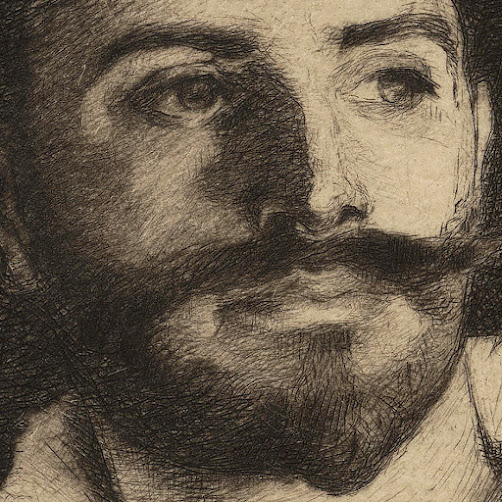Claude
Lorrain (aka Claude
Gellée, Claude; Claude Le Lorrain; Claudio di Lorena) (1600–1682)
“Shepherd
and Shepherdess Conversing in a Landscape” (aka “Berger et Bergère Conversant”), c1651. This
impression is from McCreery’s 1816 edition of “200 Etchings” printed
from the original plate.
Etching on wove
paper (with lettered watermark), trimmed with a narrow margin around the
platemark with a fragment of an engraving (verso) from the 1784 Paris edition
of “Stirpes Novae” as is discussed by Mannocci (1988) p. 28 and by H Diane
Russell (1982) in “Claude Lorrain 1600–1682”, p. 300.
Size: (sheet) 19.9
x 25.9 cm; (plate) 12.9 x 19.4 cm; (image borderline) 19.3 x 25.4 cm.
Inscribed in
plate below the image borderline: (left) “Cl. G. Inu. et F. con licenza de sup.”
State vii (of
vii) with the inscription, “42 p 3” erased (see Mannocci, 1988, p. 257).
Mannocci 38 vii
(Lino Mannocci 1988, “The Etchings of Claude Lorrain”, New Haven, Yale
University Press, pp. 250–57, cat. no. 41, seventh state); Blum 37;
Robert-Dumesnil 21; Knab 142–3; Duplessis 21; Russell 48.
Lino Mannocci
(1988) advises that this “etching is related to a painting [c1644] done for
Pietro Terenzio … which is now in the collection of the Barnes Foundation in
Merion, Pennsylvania.” (p. 258). Mannocci also notes that “Roethlisberger [the
cataloguer of Lorrain’s drawings] mentions [a] related drawing [c1645] in the
Ashmolean Museum, Oxford” (op. cit.). Interestingly, Roethlisberger’s (1968) description of this black chalk and wash drawing proposes that the “entire composition …[is closer to the] calm
compositions of the late forties … than to the hilly or rocky settings of earlier
works” (vol. 1, p. 230, cat. no. 177). Roethlisberger’s insightful comment
relates well to the portrayed calm of this etching compared to those
preceding it (such as Lorrain’s print that I posted not too long ago: “Le
Naufrage” [“The Shipwreck”]). Regarding the date of this print and the related painting,
H. Diane Russell (1982) in “Claude Lorrain 1600–1682”, National Gallery of Art,
Washington exh. cat.) states that there is "an opinion unanimously held by
specialists that the print postdates the painting and was executed during the
1650s” (p. 400).
The British
Museum offers the following description of this print: “Shepherd and
shepherdess conversing in a landscape; with herd of cows and goats passing by
and fortified town in the background. c.1651 Etching” (https://www.britishmuseum.org/collection/object/P_M-12-39).
Condition: a
strong and well-printed impression showing very little wear to the printing
plate, trimmed around the platemark with no tears, holes, folds (but there is a
light wave to the upper edge), abrasions, foxing or significant stains. The
verso of the sheet has a section of the print, “Stirpes Novae” (as documented
regarding McCreery’s 1816 edition of “200 Etchings”) and shows marks from
mounting in McCreery’s publication.
I am selling
this original etching from the 1816 edition by McCreery, executed by the one of
the most famous artists of the 17th century, for a total cost
of AU$398 (currently US$280.20/EUR249.38/GBP208.45 at the time of this listing)
including postage and handling to anywhere in the world, but not (of course)
any import duties/taxes imposed by some countries).
If you are
interested in purchasing this superb impression of a very beautiful etching,
please contact me (oz_jim@printsandprinciples.com) and I will send you a PayPal
invoice to make the payment easy.




















































